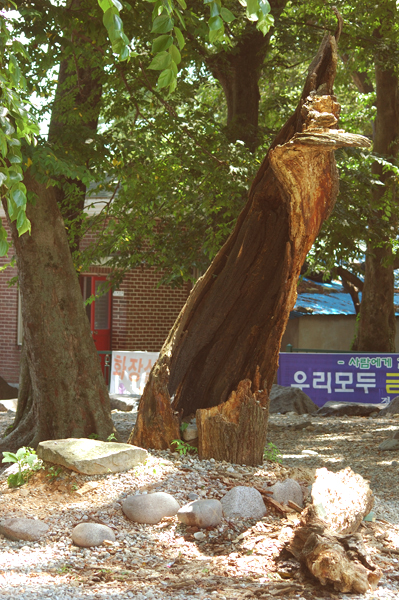Animism
and Shamanism in Korea
Photos Home
Country Photos
Korea
All
photos on this page
© John Holstein
© John Holstein
For
more on shamanism in Korea, read Seoul's
Shaman Village.
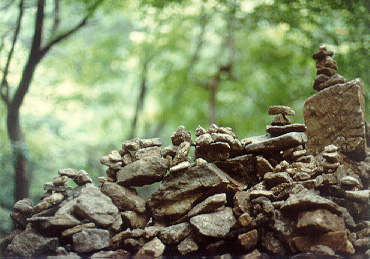
Stone
upon stone, wish upon wish. One of the hundreds of cairns that you'll
spot on any mountain trail in Korea. How do these cairns alongs mountain
paths and temple approaches stand year after year against the wind and
rain? (Buseok Temple, North Gyeongsang Province, 2000.) See more cairns
here.
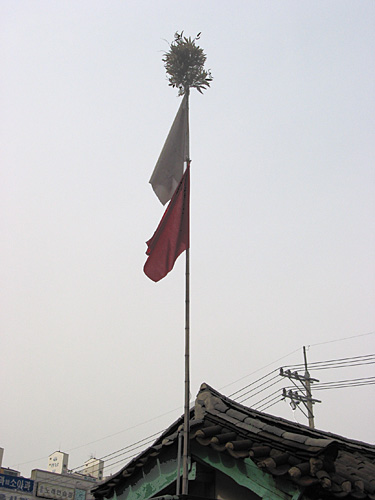
A
shaman's spirit pole. (Gireum Market, 2005)
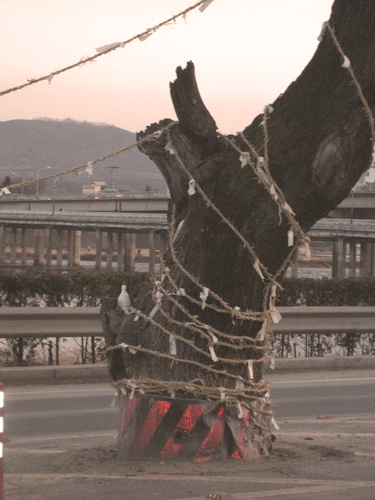
Rites
are conducted annually to the spirit in this tree. You can read more about
this tree (and other Korean trees) here.
(Andong, North Gyeongsang Province, 2006)
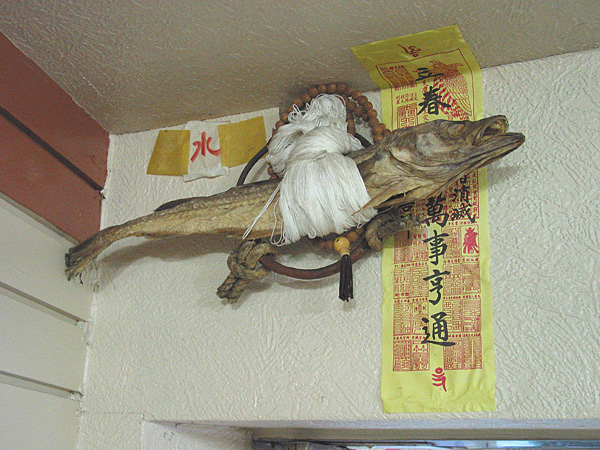
Protecting
the shop and bringing it fortune. (Restaurant, Donam-dong, Seoul, 2004)
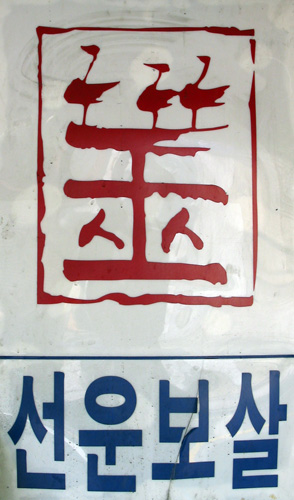
A
shaman's logo. Showing the strong connection between shamanism and Buddhism,
this shaman calls herself Bodhisattva Seon-woo. (Jeongneung 4-dong, Seoul,
2005)
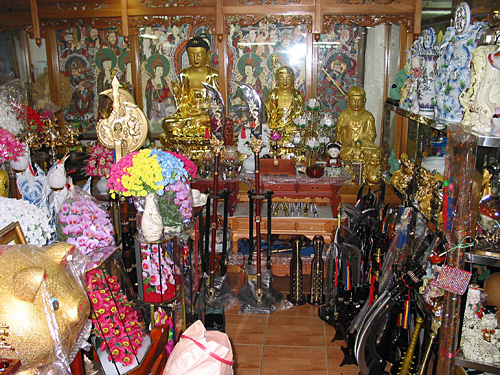
A
store selling paraphernalia for animist devotion and shaman rites. (Gireum
Market, Seoul, 2005)
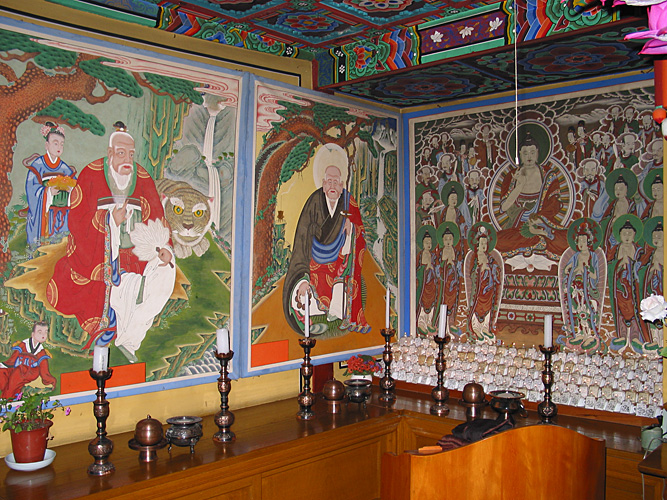

Kuksadang,
formerly the state's shrine to the nation's guardian deities. See more
about Kuksadang and Mount Inwang's Shaman Village here.
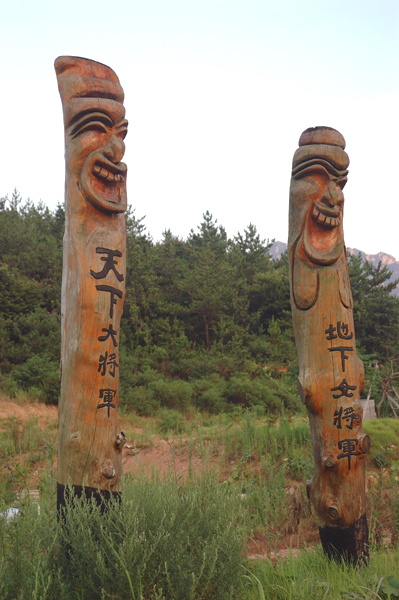
Heaven
Guardian and Earth Guardian, still the guardians of many villages in South
Cholla Province. (2006)
